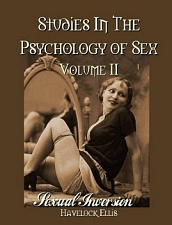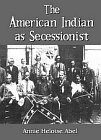
Studies in the Psychology of Sex Volume 2

Description
Psychology of Sex
Volume II
Sexual Inversion by
Havelock Ellis
It was not my intention to publish a study of an abnormal manifestation of the sexual instinct before discussing its normal manifestations. It has happened, however, that this part of my work is ready first, and, since I thus gain a longer period to develop the central part of my subject, I do not regret the change of plan. --- Some ask us why we would republish a series that might be outdated. Why? Earlier writings on this subject were not purely sterile and medicinal in content, but included a spiritual aspect that modern psychology and medicine overlook. These include a view of romanticism lacking in most modern books on these subjects.
Excerpt: HiddenMysteries
Sexual inversion, as here understood, means sexual instinct turned by inborn constitutional abnormality toward persons of the same sex. It is thus a narrower term than homosexuality, which includes all sexual attractions between persons of the same sex, even when seemingly due to the accidental absence of the natural objects of sexual attraction, a phenomenon of wide occurrence among all human races and among most of the higher animals.
It is only during recent years that sexual inversion has been recognized; previously it was not distinguished from homosexuality in general, and homosexuality was regarded as a national custom, as an individual vice, or as an unimportant episode in grave forms of insanity.1 We have further to distinguish sexual inversion and all other forms of homosexuality from another kind of inversion which usually remains, so far as the sexual impulse itself is concerned, heterosexual, that is to say, normal. Inversion of this kind leads a person to feel like a person of the opposite sex, and to adopt, so far as possible, the tastes, habits, and dress of the opposite sex, while the direction of the sexual impulse remains normal. This condition I term sexo-esthetic inversion, or Eonism.
The nomenclature of the highly important form of sexual perversion with which we are here concerned is extremely varied, and most investigators have been much puzzled in coming to a conclusion as to the best, most exact, and at the same time most colorless names to apply to it.
The first in the field in modern times was Ulrichs who, as early as 1862, used the appellation "Uranian" (Uranier), based on the well-known myth in Plato's Banquet. Later he Germanized this term into "Urning" for the male, and "Urningin" for the female, and referred to the condition itself as "Urningtum." He also invented a number of other related terms on the same basis; some of these terms have had a considerable vogue, but they are too fanciful and high-strung to secure general acceptance. If used in other languages than German they certainly should not be used in their Germanized shape, and it is scarcely legitimate to use the term "Urning" in English. "Uranian" is more correct.
 The terms usually adopted in the present volume are "sexual inversion" and "homosexuality." The first is used more especially to indicate that the sexual impulse is organically and innately turned toward individuals of the same sex. The second is used more comprehensively of the general phenomena of sexual attraction between persons of the same sex, even if only of a slight and temporary character. It may be admitted that there is no precise warrant for any distinction of this kind between the two terms.
The terms usually adopted in the present volume are "sexual inversion" and "homosexuality." The first is used more especially to indicate that the sexual impulse is organically and innately turned toward individuals of the same sex. The second is used more comprehensively of the general phenomena of sexual attraction between persons of the same sex, even if only of a slight and temporary character. It may be admitted that there is no precise warrant for any distinction of this kind between the two terms.
The distinction in the phenomena is, however, still generally recognized; thus Iwan Bloch applies the term "homosexuality" to the congenital form, and "pseudo-homosexuality" to its spurious or simulated forms. Those persons who are attracted to both sexes are now usually termed "bisexual," a more convenient term than "psycho-sexual hermaphrodite," which was formerly used. There remains the normal person, who is "heterosexual."
Before approaching the study of sexual inversion in cases which we may investigate with some degree of scientific accuracy, there is interest in glancing briefly at the phenomena as they appear before us, as yet scarcely or at all differentiated, among animals, among various human races, and at various periods.
Among animals in a domesticated or confined state it is easy to find evidence of homosexual attraction, due merely to the absence of the other sex.
This was known to the ancients; the Egyptians regarded two male partridges as the symbol of homosexuality, and Aristotle noted that two female pigeons would cover each other if no male was at hand. Buffon observed many examples, especially among birds. He found that, if male or female birds of various species-such as partridges, fowls, and doves-were shut up together, they would soon begin to have sexual relations among themselves, the males sooner and more frequently than the females.
More recently Sainte-Claire Deville observed that dogs, rams, and bulls, when isolated, first became restless and dangerous, and then acquired a permanent state of sexual excitement, not obeying the laws of heat, and leading them to attempts to couple together; the presence of the opposite sex at once restored them to normal conditions.
Bombarda of Lisbon states that in Portugal it is well known that in every herd of bulls there is nearly always one bull who is ready to lend himself to the perverted whims of his companions.4 It may easily be observed how a cow in heat exerts an exciting influence on other cows, impelling them to attempt to play the bull's part. Lacassagne has also noted among young fowls and puppies, etc., that, before ever having had relations with the opposite sex, and while in complete liberty, they make hesitating attempts at intercourse with their own sex.
This, indeed, together with similar perversions, may often be observed, especially in puppies, who afterward become perfectly normal. Among white rats, which are very sexual animals, Steinach found that, when deprived of females, the males practise homosexuality, though only with males with whom they have long associated; the weaker rats play the passive part. But when a female is introduced they immediately turn to her; although they are occasionally altogether indifferent to sex, they never actually prefer their own sex.
370+ pages - 8 x 6.5 inches SoftCover
















